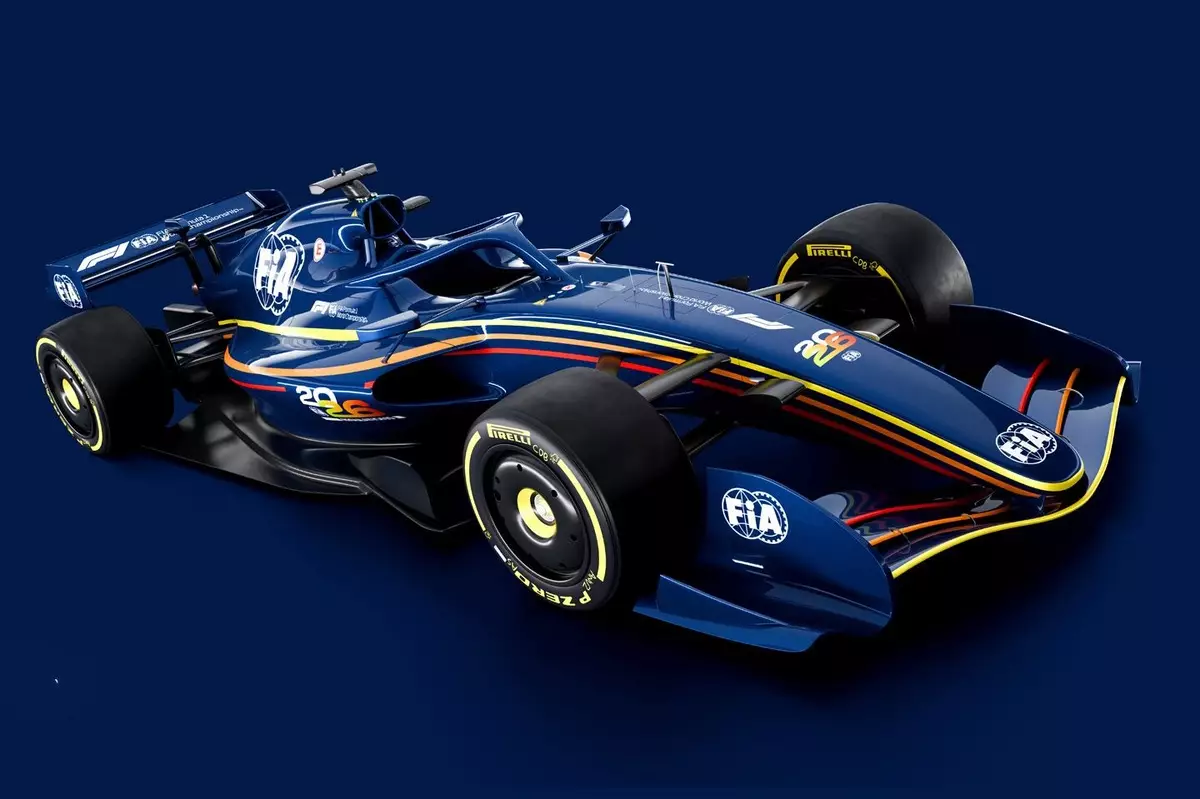As the 2026 season approaches, the buzz surrounding the upcoming technological and regulatory changes is deafening within the Formula 1 community. These modifications promise to reshape the very fabric of racing, challenging traditional perceptions of speed, skill, and the essence of competition. While some critics voice skepticism about slower lap times, a deeper analysis reveals that the sport’s core appeal lies beyond just numbers. Instead, innovation paves the way for a more strategic, dynamic, and engaging spectacle.
The new regulations aim to overhaul car designs with a focus on cutting-edge aerodynamics and energy management systems. Drivers’ initial simulations have conveyed a subtle yet profound shift—a “new feeling” that hints at an evolution rather than a regression. Notably, these cars will excel on straightaways thanks to reduced downforce, yet they will be considerably less agile in corners. This change signals a fundamental rethink of racing tactics, emphasizing precision, energy conservation, and strategic overtaking over raw speed.
Critics often fixate on lap times, but the impact of these modifications transcends pure numbers. It’s about fostering a racing environment where adaptability, skillful energy deployment, and racecraft take precedence. FIA’s Nikolas Tombazis correctly emphasizes that lap times fluctuate across different eras; what matters most is maintaining close, unpredictable contests that captivate fans. The sport has historically evolved, and this new chapter continues that tradition, illustrating that progress isn’t solely measured by pace but by the excitement and unpredictability it engenders.
Rethinking Speed: Why Slower Might Mean Better
The notion that slower cars undermine thrilling racing is misguided. In reality, it could result in more authentic and competitive battles. As Tombazis notes, initial impressions of slower lap times fade once drivers and fans acclimate to the racing style these cars introduce. The emphasis shifts from outright speed towards strategic positioning and energy management—a revolution inspired by F1’s desire to enhance racing quality rather than merely chase faster lap times.
Projected data suggests that the new generation will be around one to two and a half seconds slower per lap at the start, not an insurmountable gap but enough to encourage innovation. This is no cause for alarm; rather, it’s an opportunity for teams to develop smarter, more efficient cars. As teams learn to optimize these new platforms, we can expect a period of evolution where lap times improve without the sport losing its essence. What truly matters, however, is the level playing field that these changes could foster—a realm where driver skill and team strategy determine victory more than ever before.
Moreover, the FIA’s approach underscores a crucial philosophy: racing is about the competition itself, not just the numerical outcome. If cars become as slow as some lower-tier categories, it would dilute the excitement. But the regulatory framework aims to keep the sport exhilarating, balancing technological innovation with the fundamental human and mechanical elements that make F1 unique. This shift might even bring the sport closer to its roots, emphasizing overtaking, tactical depth, and driver ingenuity.
Innovative Technologies and Their Role in Shaping the Future
Beyond the reduction in downforce and altered lap times, the 2026 regulations introduce revolutionary aerodynamic concepts. The removal of DRS, a staple of modern overtaking, is a deliberate move to make overtaking more challenging yet more rewarding. Instead, active aerodynamics—such as X-mode and Z-mode—allow drivers to switch to low-drag configurations, creating a semi-permanent DRS effect on straights. This nuanced approach demands greater tactical finesse, transforming overtaking into a skillful chess match rather than a predictable point-and-shoot scenario.
The introduction of Manual Override Mode, functioning akin to “push-to-pass,” is another fascinating development. By granting drivers a controlled power boost, the regulation fosters more complex racecraft, rewarding strategic timing and decision-making. It’s a carefully calibrated tool designed to maintain overtaking opportunities without compromising the racing’s integrity or turning it into a spectacle of reckless bursts of speed.
Critical examination reveals that these technological shifts serve a broader purpose: to elevate the sport by demanding more from drivers and teams. The complexity of energy recovery systems and aerodynamics introduces an intricate layer of strategy, pushing teams to innovate beyond mere horsepower. Such advancements promise to make each race a compelling test of ingenuity, patience, and adaptability—traits that epitomize the spirit of racing.
Challenging the Status Quo: A New Era for Fans and Competitors
Some might argue that these changes threaten to diminish the visceral thrill of high-speed racing. However, a critical perspective suggests that the sport’s true allure lies in its unpredictability and strategic depth. The 2026 regulations are a conscious effort to preserve, if not enhance, those qualities by fostering closer competitions.
The evolution also challenges fans to view racing from a new vantage point. Instead of fixating on lap times, supporters can focus on racecraft, tactical overtakes, and energy management—the elements that create suspense and drama. The sport’s foundation remains intact: competitive spirit, technological innovation, and human skill. Slower cars, in this context, become an invitation to appreciate racing as a nuanced craft rather than a straightforward sprint.
Furthermore, this regulatory overhaul could democratize success. With fewer reliance on raw speed and more on strategy and ingenuity, smaller teams may find opportunities to challenge established giants. This democratization aligns with F1’s broader goal of making the sport more unpredictable and engaging, both for die-hard fans and casual viewers alike.
In essence, the changes are not a concession to slower racing but a strategic recalibration aimed at securing the sport’s future. It’s a bold experiment—one that might initially seem counterintuitive but, upon closer inspection, promises to elevate F1’s stature as the pinnacle of motorsport innovation.

